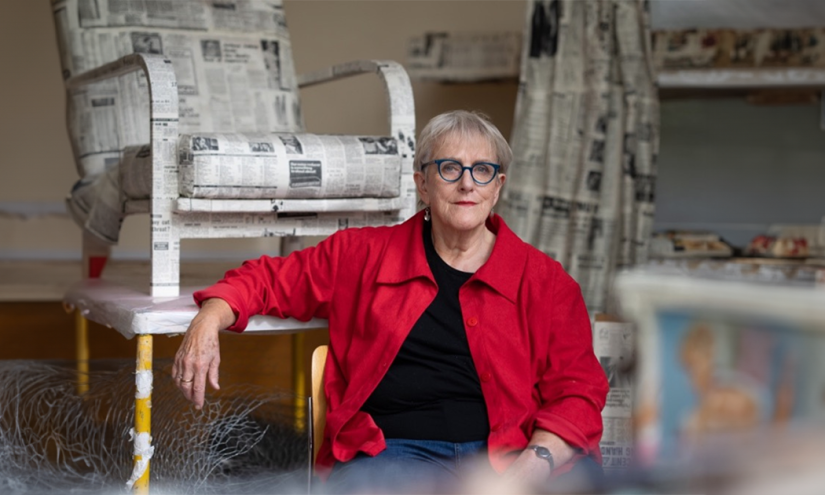


Bobby Baker was a feminist before she knew what it meant. For over five decades, the multi-disciplinary artist has traversed numerous mediums including performance, drawing, installation and photography, but at the centre of her art practice is the everyday act of domestic labour. Elevating this medium brought Baker into prominence in the 1970s, as she subverted stigmatised notions of domesticity, gender and the family unit through her art and radicalising traditional art and performance.
Some of her pioneering works include Meringue Ladies World Tour (1973–ongoing) and Kitchen Show (1991), where she opened her kitchen to the public. However, her ground-breaking installation was An Edible Family in a Mobile Home – where, aged 25, she opened her Acme prefabricated east London home revealing a life-sized nuclear family made of cake. The installation was open for a week and the public were invited in to view and to eat.
At 73 years – an important distinction she wishes to make – Baker has cultivated a profound perspective for age and creativity. She says, ‘As a female artist my age became a feature quite early on and is often mentioned as a sort of oddity, but I’ve always loved the age that I am at every stage of life.’ Now, Tate Britain has invited Baker to restage the Edible Family (1976), as part of the gallery’s Women in Revolt! exhibition, the first time the work has been shown in a major institution. Opening for the first time in November 2023, Edible Family will return for a second run in March 2024. Women in Revolt! is the first significant survey of feminist art in the UK, and Baker’s work is shown alongside over 100 visionary artists such as Lubaina Himid, Sonia Boyce and Mona Hatoum.
Ahead of International Women’s Day (March 8) and the final Tate installation opening, Baker spoke to Artichoke about her career, why An Edible Family in a Mobile Home is even more relevant now and why people want to hear from older artists.
“The minute I arrived [in the house], I just knew I wanted to make a life-sized cake family because I was living amongst real families.”
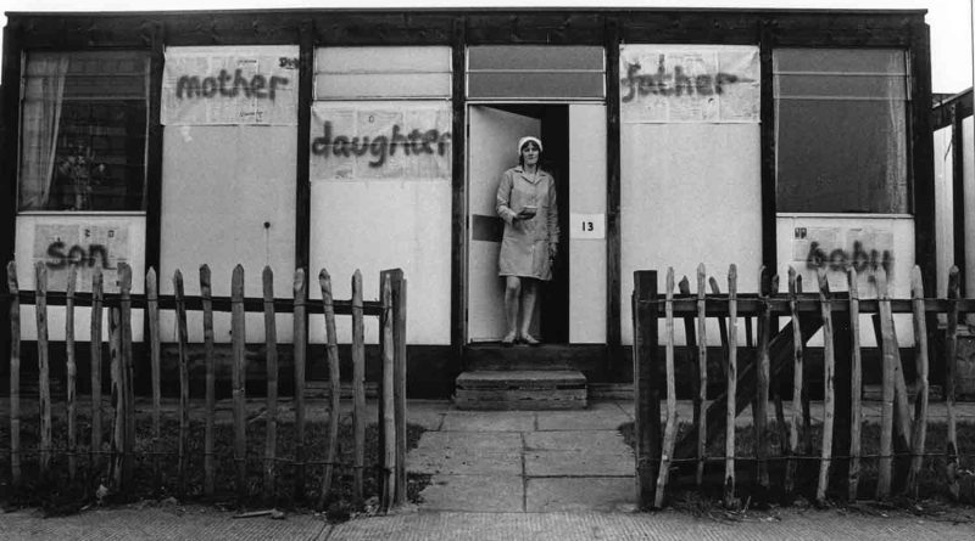
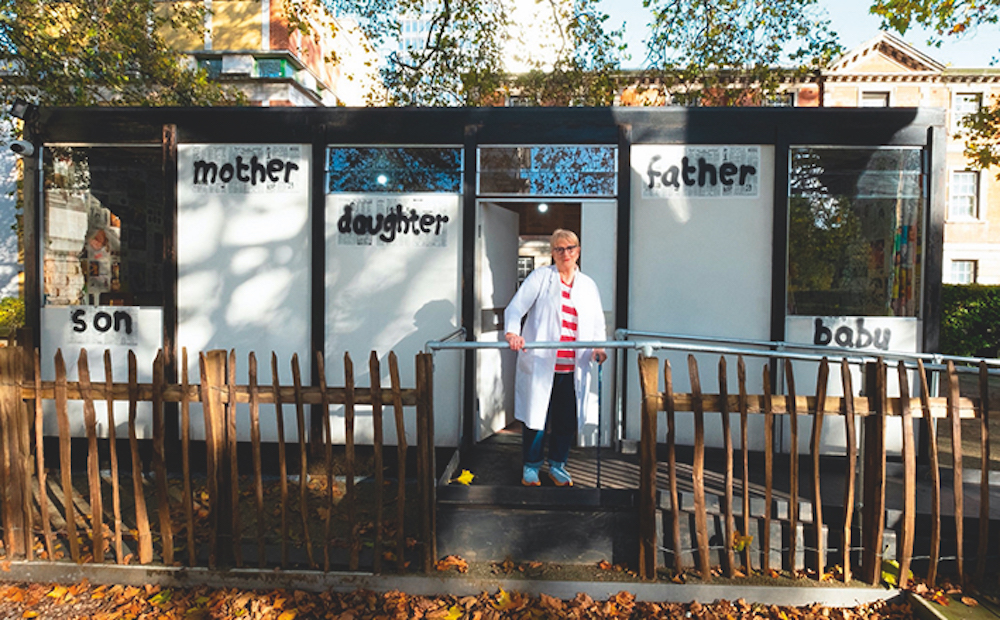
I was at Saint Martin’s School of Art [now called Central Saint Martin’s School of Art and Design], I did Painting, and I became really disillusioned by essentially innately not being taken seriously as an artist, and of course, I really thought I was. I never saw any work that I could relate to as being an art form that would express the ideas that were vaguely swirling around my mind. I also found [Central St Martins] increasingly elitist.
I’ve always had a passion for food and cooking, so I tried to write my dissertation on how to make chocolate mousse, which I didn’t manage to do, but I wrote quite a long piece about food in literature. When I left, I was so disillusioned by the scene I saw at the time that I thought, well, I can’t be an artist then if that’s what it’s like.
I was making a birthday cake for somebody in the shape of baseball boot, quite badly. I looked at the cake and had this blinding flash of revelation that it was a work of art, but for me it was a Work of Art of Great Significance…and it was like a light switch went on! That was it. I met some people who described themselves as performance artists who said, ‘bring your cakes along’. It was a very exciting time – it was the 70s. I now realise, in hindsight, [that I was a feminist]. I didn’t know the word ‘feminist’ at the time. I knew about the women’s liberation movement, but I wasn’t directly connected to it. I knew other young women like me, and I went to the ICA, but it wasn’t overtly around being a woman. I just thought it, I didn’t talk about it.
I ended up doing an Art Teachers Certificate at Goldsmiths. Basically, I was making my own work…making cakes and doing performances and for my dissertation there, I think this was the real point, I made a sort of installation in the garage – called M&B Motors. I covered the whole interior with these giant paintings of a woman who went from being a woman, to a cake, to a tree – a metamorphosis of these giant paintings all the way around the wall. Then I made a life-size woman out of cake on a mattress in the middle, called The Life Room (1974) – a reflection on women.
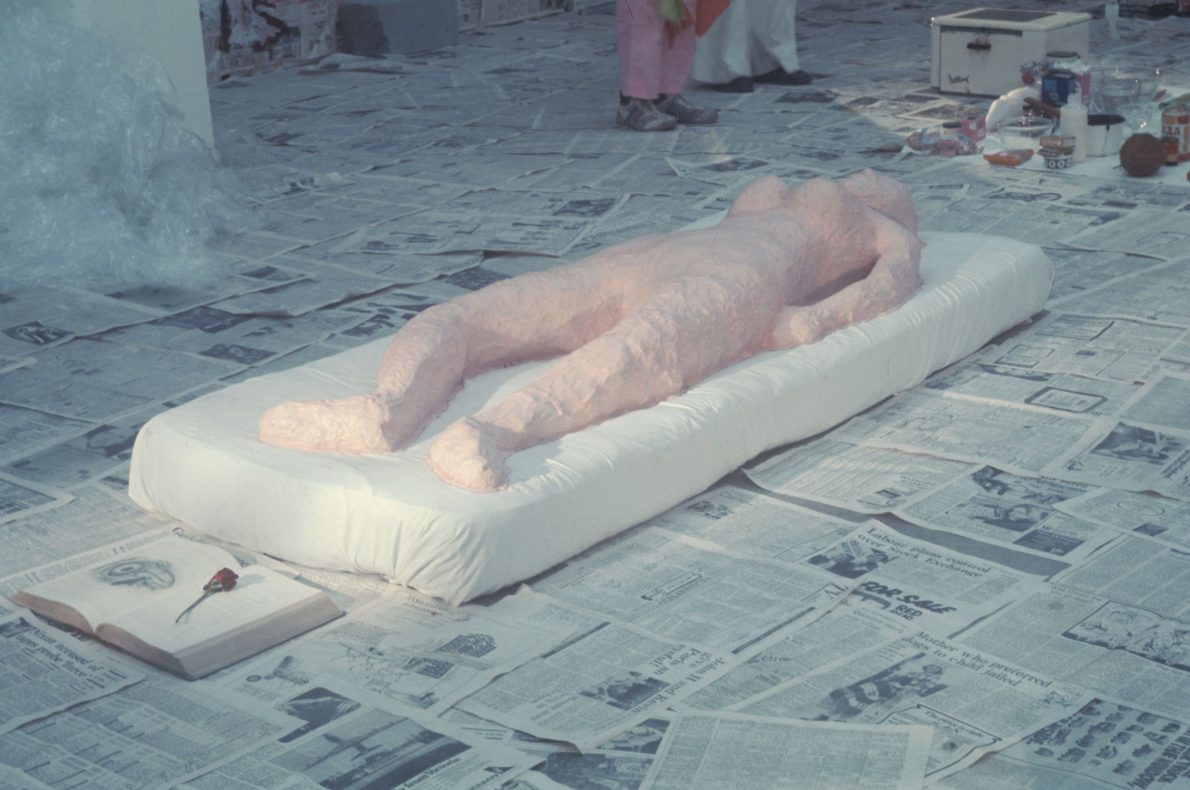
I didn’t have anywhere to live; I kept moving from place to place so I applied to Acme [Affordable Housing for Artists] and I was incredibly lucky. I got a prefab – a little home on an estate in Stepney with other families with young children mostly. They were designed after the war and had sort of become a model for ideal living. At that time, it was quite radical because they had a separate bathroom with running water and a kitchen.
The minute I arrived [in the house], I just knew I wanted to make a life-sized family because I was living amongst families. I was 25 and all that I had done had been based on a sort of passion and intuition. The ideas I had for my work came out of this hunch to connect with people where they lived.
It was a huge amount of work. I’m sort of astonished by my innocence really, that I thought you had to do everything yourself to be a proper artist, that you literally had to make everything. I literally designed all the marketing material. I illustrated it, I made the boxes. I did literally everything. I did all the papering. I made the cake, but the brilliant bit was that I by then had met Andrew Whittuck, a wonderful photographer, who later became my husband, and he had a studio with a kitchen and freezer for his film stock I could use – he helped me a lot. I set it up, I applied to the Arts Council, I got a grant. All based on this passion to involve local people and I had this vision of connecting with the art world, people from across London. I was less successful at that part of it, but I was really successful locally, which was one of the things I most wanted. I had so rejected the elitism of the art world that I’d seen. I wanted people to come and eat the family and be part of it really. And right from the day one, all the local children used to come in. I opened it for a week, and I was there all the time acting as the host and pouring tea, offering cake.
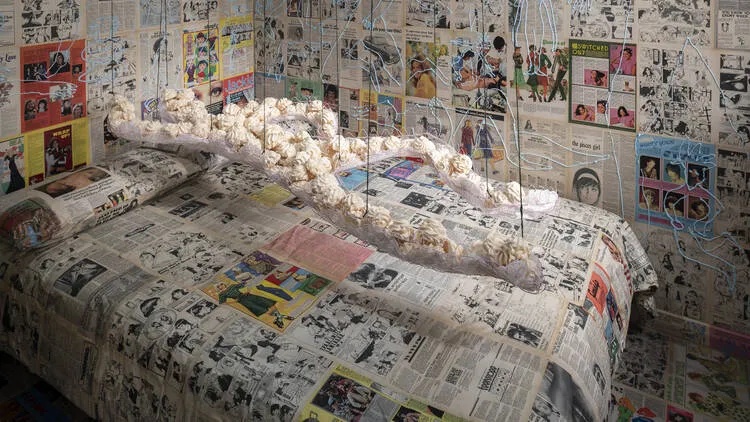
I never thought it would happen again, but obviously knowledge of it grew, based on Andrew’s amazing photographs and as my work has. I’ve been an artist ever since. I’m very interested in making work about where people are, it reaches other audiences, yet I’m thrilled to be at the Tate. The art world has become much more democratic now. Linsey Young, the curator of Women in Revolt! approached me. One thing led to another, we raised all the money and received a major award from the Arts Council for Nationally Significant Projects, so the plan emerged. We remade the house but this time around, it has ramps and uses contemporary materials. The original one was made of asbestos! It’s really wonderful working with a big team, some who I work with regularly and some who we’ve now brought into the team [This time, instead of being greeted by Baker, visitors are welcomed into the home by trained hosts recruited from Chelsea College of Arts, part of University of the Arts London (UAL), and You Make It an award-winning race and class inclusion charity based in Inner London.
Next year, the house is going to the Whitworth Gallery in Manchester, and then we are donating the building to an arts organisation in Lancashire. This was my most thrilling moment. I contacted Idle Women [an arts, environment and social justice collaboration founded by artists], they’re incredible organisation and said, ‘could you use a building for the women you work with?’ and they immediately said ‘yes’. They are going to decide where and what it becomes so I’m delighted by the journey the house will have had.
“I looked at the cake and had this blinding flash of revelation that it was a work of art…it was like a light switch went on!”
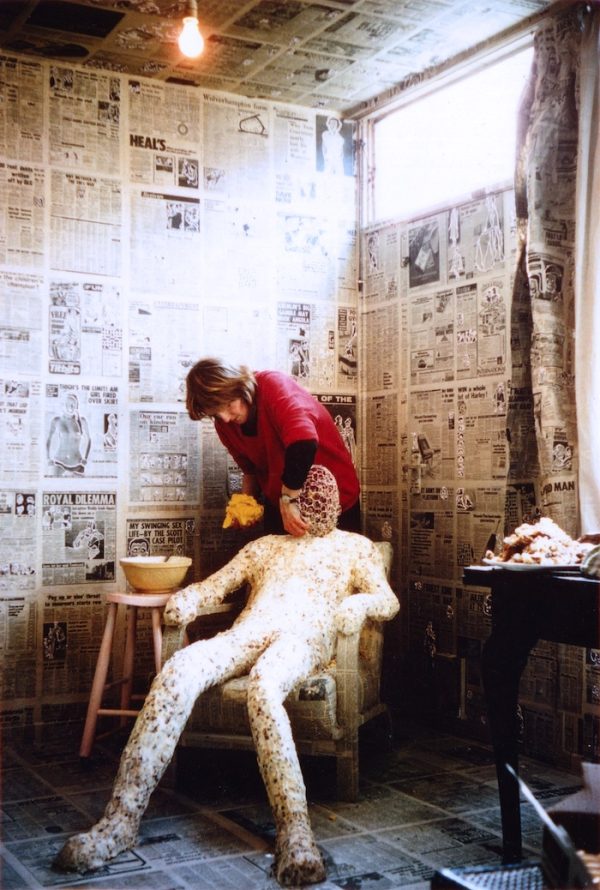
Shockingly, it’s even more relevant, in terms of housing, support for families and food and nutrition. We know we live in a world where people don’t have enough to eat. Family and childcare support is in crisis. We’re one of the worst countries compared to the rest of Europe for childcare. My ethos, the whole core message of my work has always been to focus on these minutiae of how we behave daily to each other or how we consider what we behave, but not in a directly political sense, just a reflection about exploring that invisible demeaned part of our life that has no status. As a woman, I’ve been profoundly shocked again and again that this work, that is the foundation of any society – how you bring up small children and how you look after each other – has no status and isn’t paid.
I suppose [An Edible Family] was intuitively about that, but now it’s so relevant. The walls, floors and the ceiling are all covered with newsprint that relates each member of the family. We’ve got either reproductions or originals, and so people are just gripped by what they’re reading and yet it’s very similar to what is going on now. There are articles about austerity and corruption. It’s extraordinarily similar to now yet this was 1976.
There are so many aspects to everyday life and actually some things have changed and are changing. I’m passionate about art and I’ve spent my whole life being an artist; trying to be an artist. It’s about the power of art to help people see things differently, think differently, experience things differently. And I really love it when people say, ‘Oh, I’ve never seen anything like this before, but I can’t stop thinking about it’. It’s not about me, it’s about themselves and their lives.
“As a woman, I’ve been profoundly shocked again and again that this work that is the foundation of any society – how you bring up small children and how you look after each other – has no status and is unpaid.”
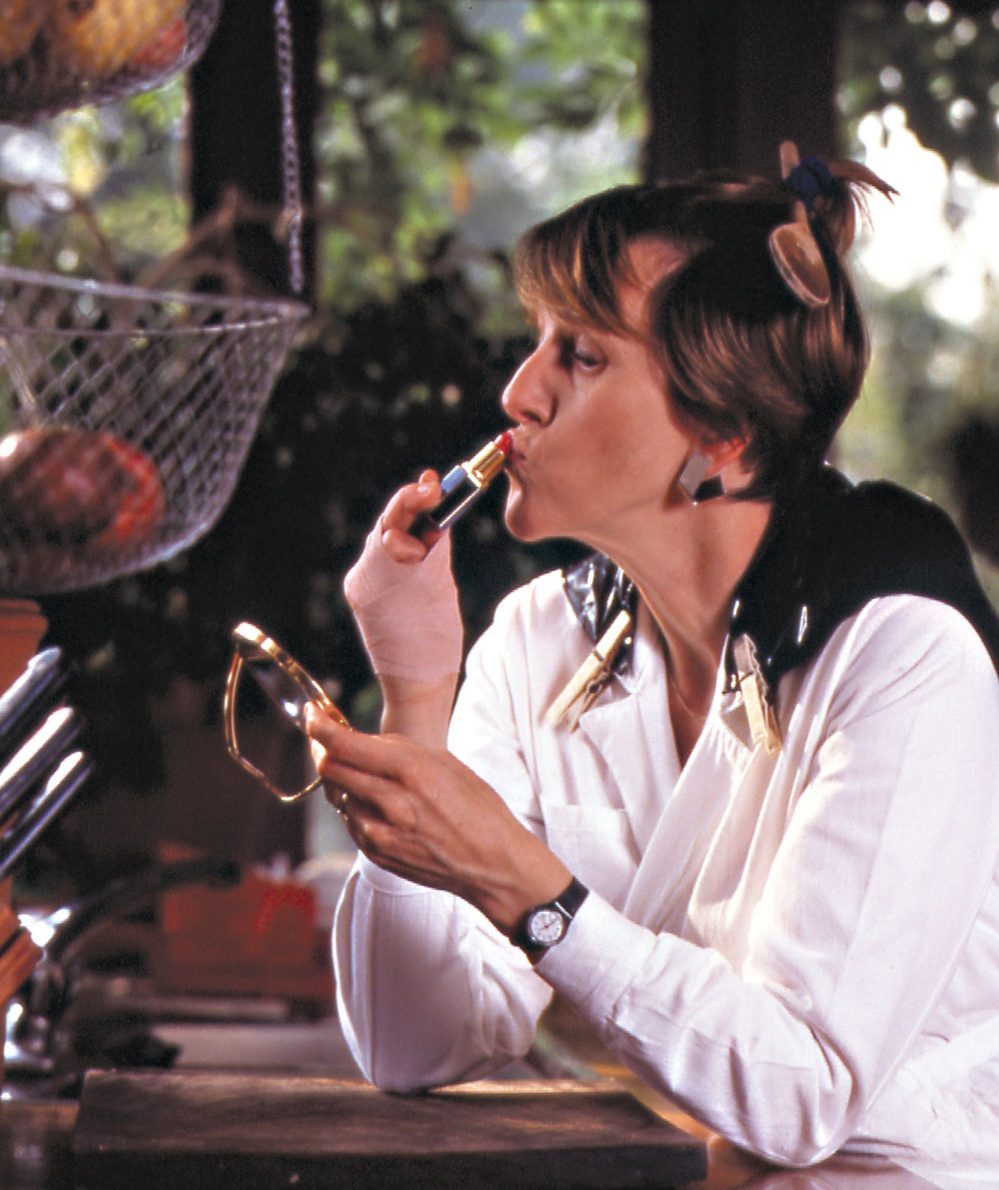
Well, I think what’s been the biggest boon of all is being part of an exhibition for the first time in my life, which has 111 other women artists in it. Did you know it’s the most popular and well attended show of all Tate shows across all their sites nationally?
So, there’s a real interest in what we were doing then because it was a very radical period. There were a lot of us doing things in different ways, a lot of women, some men. It was a time where people were experimenting, and it was not about money. This was about exploring ideas and ways of communicating with each other. So, to be part of that is extraordinary, affirming and interesting to now reflect on that time.
People are interested in work by older artists, of what we made when we were young. They can think of us as role models or people not to be like. I think there’s not enough stories of women my age. I’ve always been aware that I didn’t get the same opportunities as men. I’ve had to fight to get opportunities like those had by my male peers in the art world. It was only when I got to be about 60 that I realised, ‘Oh no! It’s ageism now’. I was so cross! It was so clear that that was the narrative. I was an ‘older woman’.
My work on domesticity had been seen as a bit of a joke, certainly slightly taboo, not to be taken as seriously as other subjects. But that has changed. I’ve noticed that younger people are making work like we used to make work. So, it’s very exciting. It feels a real privilege to be in this setting, meeting people of all ages and generations and just considering the ideas behind the show.
“It’s about the power of art to help people see things differently, think differently, experience things differently.”
Gosh, that’s a really nice question. I think what I realised quite early on was that I had this period of making a lot of food made out of cake and I got really fed up with that. I ruined my teeth! I did that in my 20s and then I got into a period of doing performance. I like drawing, actually. I would say it’s my favourite personal medium. During the pandemic, I borrowed some money and built a studio outside. It’s the best money I’ve ever spent. I’m so lucky to have a garden that can fit a workspace.
I can paint for the joy of it, when I have time. I’m interested in making visual arts that then become part of another project, so I would say painting and drawing are the things I love the most. But I really love film and video, and I love photography. Some of the photographic work Andrew and I did together of me are some of the things I’m most proud of.
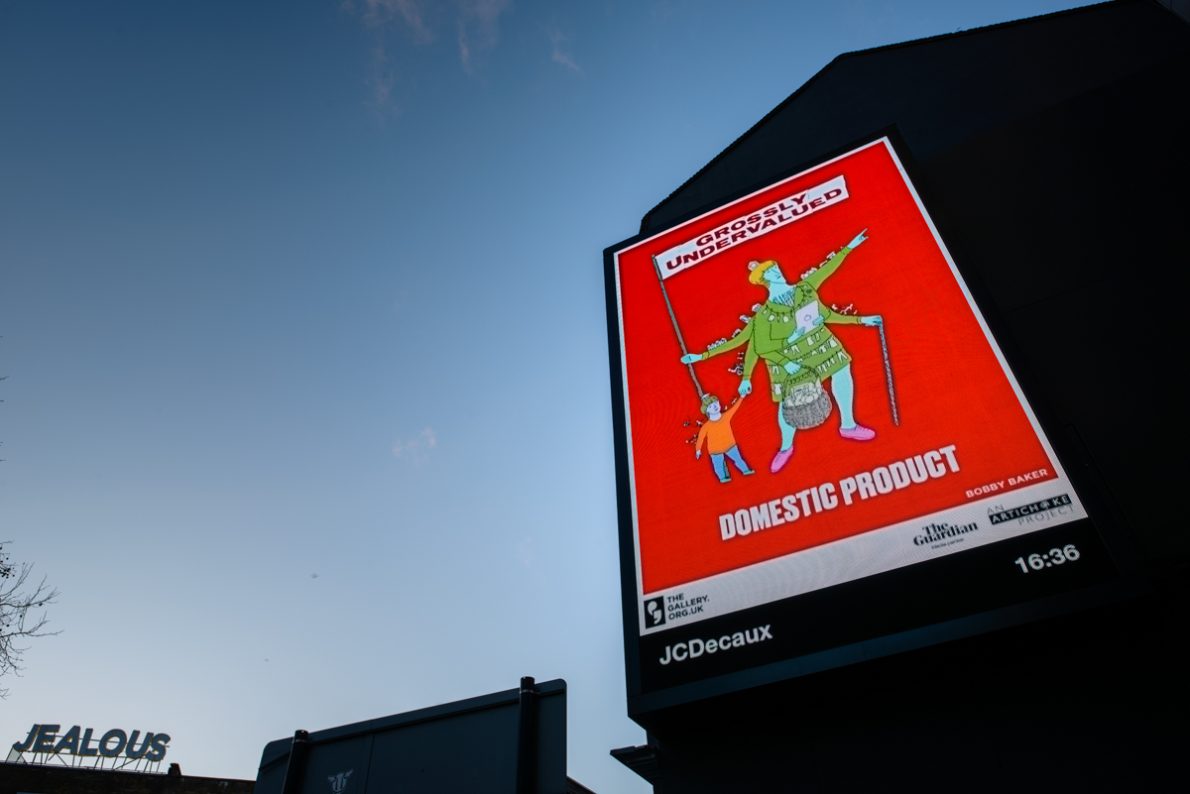
Some of my strongest works are those that I’ve worked on for at least 10 years. So, I got the idea for a domestic revolutionary party fit for the 21st century probably about 10 years ago. Initially it was the idea of just me performing in the street as the sort of Dada-esque figure turning up in public situations and doing these anarchic dances – but then it grew. I saw an extraordinary show at the Tate about Soviet propaganda and I was absolutely bowled over by that era and how it related to the [activism of the early twentieth century] Dada movement and that work being made by people elsewhere in Europe.
So, it all came together in this notion about propaganda that if I was going to start a revolution, I’d have to make propaganda. I had a retrospective in Madrid at La Casa Encendida and they gave me a bit of money to do a poster, the first poster. We received a small commission as part of Leeds 2023: Year of Culture, to create a Practising Propaganda Party and I’ve made another poster since, and I’m working on a third one in my studio.
When I read The Gallery open call, I just thought I can apply to that. I worked with Joe Hales who is an incredible designer. We used that first poster I’d done, adjusted the colours and entered it. I was beyond thrilled when it got selected.
The idea for EPIC DOMESTIC is to create a whole range of different approaches to propaganda, including performance and culminate with a significant exhibition in the UK. The main component will comprise a street performance with a float and a lot of women. I can’t tell you how thrilling the thing I want to get made is, I can’t describe it, but I’ve got it in my head now. So, it’s a big ambitious project and it might not happen for another three or four years, but it’s in motion.
I’m a real woman. I don’t know – I want to see what people make of it. What would you have if you had a show and said ‘A Real Man’? It would be really interesting; you’d get a huge range of different images and ideas about what it is to be a man in different societies so adding ‘real’ is quite contentious and very topical and timely. I bet you’ll get some really fascinating ideas on that.
I believe in a huge, huge range of different perspectives. What I am more interested in is what it means to be a woman and the disadvantages and privileges that it has. Obviously, a woman in my generation, I’ve experienced a lot of disadvantages of being a woman, yet I’ve had the privilege of having children, so it’s complicated. I am a mother and a grandmother, but that’s great. I just don’t have one answer to this.
I’m very pleased that some of my work is in the Hayward Gallery Touring exhibition: Acts of Creation: On Art and Motherhood, curated by Hettie Judah and launching at the Arnolfini in Bristol [touring to Midlands Art Centre, Birmingham; Millennium Gallery, Sheffield; and Dundee Contemporary Arts]. It’s drawings I made when the children were young, and I’ll also be doing a special screening of a film version of my performance Drawing on a (Grand) Mothers Experience (2015). I wasn’t able to go on tour with it during the pandemic so we made a film of it. I’m working on lots of things, but really, what I want to do this year is to get on with my propaganda [of EPIC DOMESTIC series], paint my propaganda in my new studio, get a new dog, watch television and cook.
Experience the 2023 replica of Bobby Baker’s An Edible Family in a Mobile Home (1976, 2023), an installation on Tate Britain’s South Lawn (8 March – 7 April 2024 from 11:00 – 17:00).
You can enter the house and view this special installation, plastered with 1970s magazines and newspapers and eat a piece of the cake family along with a cup of tea. The family figures will be made with garibaldi biscuits, meringue, and various flavours of cake (including a vegan option), specially baked by Lily Vanilli.
Admission is free, on a first-come first-served basis. You may need to wait to enter the installation. Find out more via Tate.